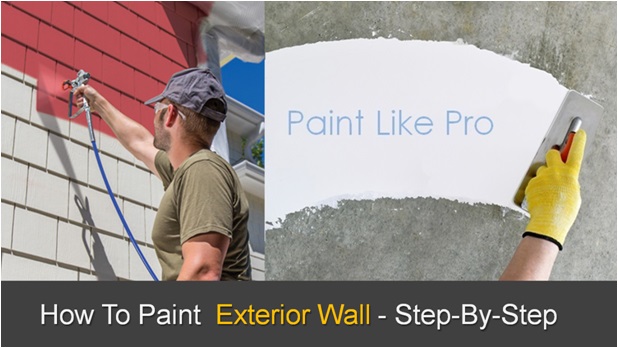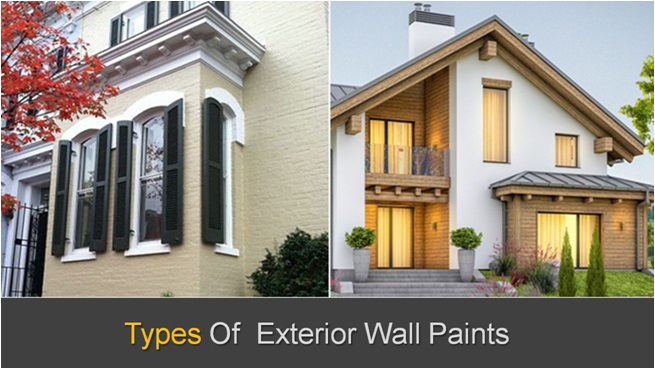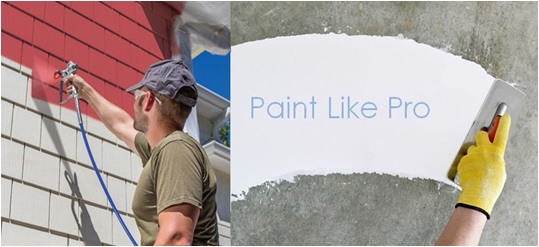
How To Paint Exterior Walls ?
Complete Exterior Wall Paint DIY Guide
How to paint exterior walls is one of the most common topics for DIY projects. Understanding the correct technical process to paint the exterior walls is crucial to the success of your DIY project.
The exterior paint is an important decision that protects your house from adverse weather conditions and associated maintenance expenses.
The right selection of exterior paint can transform the look of your house. However, the final outcome of the exterior painting project depends upon several factors.
It is important to correctly execute the exterior painting work to ensure that you get the best return from your investment in buying the expensive paint.
But sometimes, the exterior painting DIY project does not come up to our expectations. This happens mainly due to the wrong execution.
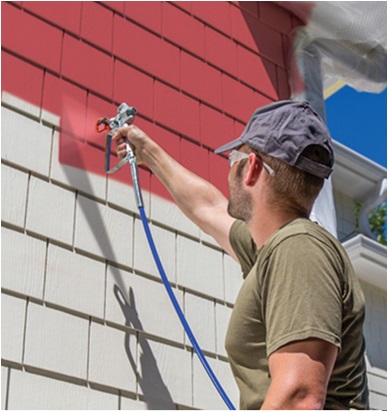
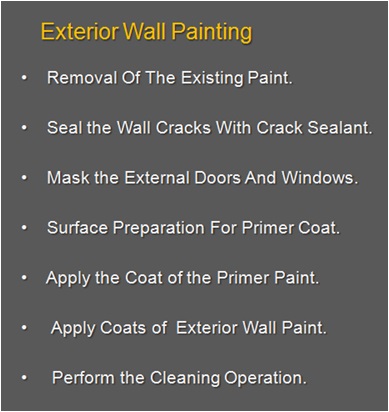
This is a comprehensive resource that will guide you step-by-step to ensure your success. You will learn how to paint exterior walls in seven simple steps.
After following this process, you can be rest assured of professional quality results for your exterior paint project.
Let us take a quick look at the list of the paint materials and the tools you will need to execute this project.
List Of Wall Paint Materials
You will need following materials for the exterior wall paint DIY project.
- 1 : Wall Primer Paint.
- 2 : Exterior Wall Paint.
- 3 : Sandpaper.
- 4 : Wall Crack Sealant.
- 5 : Wall Primer Paint Thinner.
- 6 : Wall Paint Thinner.
- 7 : Masking Tape.
Wall Painting Tools
You will need following tools required for the exterior wall paint DIY project.
- 1 : Step And Extension Ladder.
- 2 : Wall Scrapping Tools.
- 3 : Long Handle Brush.
- 4 : Roller Brush With Drip Tray.
- 5 : Bristle Brush For Paint.
- 6 : Paint Blender.
- 7 : Empty Paint Containers.
How To Paint Exterior Walls ?
Complete DIY Procedure To Paint Exterior Walls
You can execute an exterior painting project in seven simple steps and achieve professional-quality results.
- Step 1 : Removal Of The Existing Paint.
- Step 2 : Seal the Cracks On The Wall Surface.
- Step 3 : Mask the Exterior Doors And Windows .
- Step 4 : Prepare Wall Surface For Primer Paint Coat.
- Step 5 : Apply The Primer Paint Coat.
- Step 6 : Apply Two Coats Of Exterior Wall Paint.
- Step 7 : Perform Unmasking And Cleaning Operation.
STEP - 1
Wall Surface Preparation
Wall Surface Preparation For Exterior Wall Paint
The first step of the exterior wall painting work is to prepare the wall surface for the painting work.
This is a very crucial step and the wall surface must be prepared as per the recommended procedure to avoid future problems such as flaking and peeling of the wall paint.
The exterior wall paint can either be applied over the existing paint or on a new cement plastered wall. For wooden houses, the external surface can either be a new wooden surface or it could be previously painted.
Surface Preparation For Walls With Existing Paint
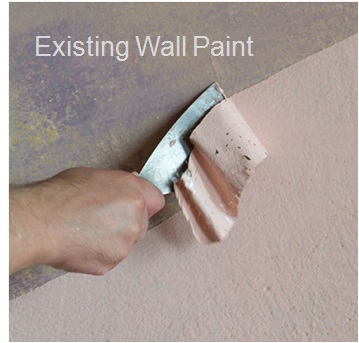
Surface Preparation For New Cement Plaster.
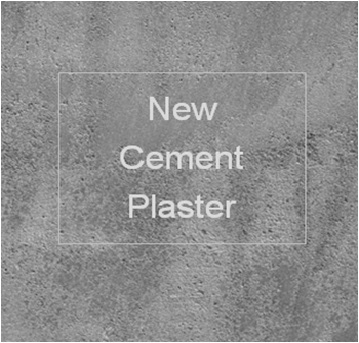
The wall surface preparation is a crucial step that is necessary to ensure a perfect bond between the wall and the paint.
Utmost care should be taken to avoid any procedural lapses and short cuts in the preparation of the wall surface. The untreated surface can cause early peeling of the paint and reduce the life of the wall paint.
The painting work for the interior walls can either be done on the existing painted walls or on the newly constructed plastered wall surface.
Let us discuss both the situations.
How To Paint Exterior Walls
Surface Preparation For Walls With Existing Paint
Removal Of The Existing Paint.
The removal of the existing paint, especially on the exterior walls, is a difficult and tedious task. If the existing paint is in good condition, then the existing paint removal may not be required.
However, this decision depends upon the condition of the existing paint. In most cases, partial paint removal is required instead of complete paint removal.
The removal of the existing paint takes some additional time, but it pays off in the long run. Especially if you have selected a luxury emulsion paint, then complete removal of the existing paint will give the best results.
The easiest way to remove the existing exterior paint is by using high-pressure water jets. The pressure washer can be effectively used to partially remove the existing paint.
Another method used for the removal of existing paint is by using a special wire brush. On the plane surface , the paint can easily be removed by using any scrapping blade.
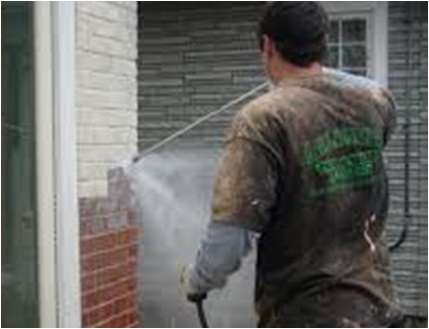
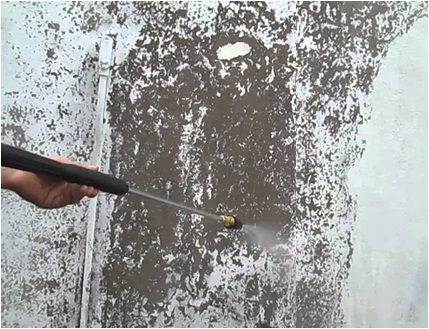
The pressure washer paint removal method is also very effective on textured wall surfaces where scrapping tools cannot be used.
After the removal of the existing paint, the wall surface is scrapped by wire brush. All the loose particles are removed.
At this stage, all the wall cracks, every hole, and ridges must be sealed with either cement paste or special crack sealant compound before the application of the primer coat.
The wall surface area is now ready for the application of the second coat of primer paint.
Important Tips
For the removal of the stubborn existing paint, special paint strippers and paint thinners are available on the market.
These special-purpose paint strippers are first applied to the existing paint, and the existing paint can be easily removed using a pressure washer or a drilling machine with a wire brush attachment.
Surface Preparation For Exterior Cement Plaster Wall
The exterior wall painting work for the newly plastered wall surface can be done only after the initial curing period of the plaster is over. This period is usually at least fifteen days in sunny, dry weather.
For best results, the newly plastered wall surface should be completely dry and there should not be any dampness present in the wall.
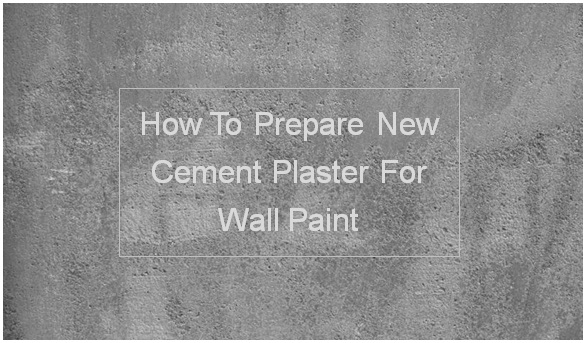
The plaster surface is first cleared and any lumps present are removed using a pressure washer. The plaster surface is then rubbed by using a wire brush or sandpaper to remove the dust.
The wall surface after the sanding job should be cleaned to remove all the loose particles. At this stage, all the cracks , every hole, and ridges must be sealed with either cement paste or special crack sealant compound.
The exterior wall surface area is now ready for the application of the cement primer paint coat.
STEP - 2
Sealing The Wall Cracks
How To Repair Exterior Wall Cracks ?
The cracks on the exterior wall can cause seepage problems and maintenance issues. All wall cracks must be properly sealed prior to the application of the wall paint.
Most walls develop random small cracks over a period of time due to the ageing of the building and some other factors. The structural cracks need special treatment.
It is recommended to open the cracks with some sharp-pointed scrappers. The cracks are sealed with a special wall crack sealant material readily available in the store.
There are many reputed wall crack sealant products readily available ( Amazon , Walmart ) in any home improvement store or hardware shop.
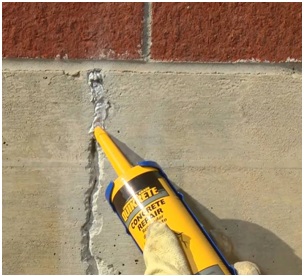
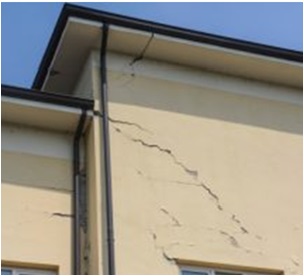
The exterior wall surface cracks can also be sealed by using the cement paste. However, the use of special crack sealant material will give much better results.
After sealing the wall cracks, the next step is to level these cracks by sanding the wall surface with fine sandpaper.
At this stage, all the holes on the wall surface must be sealed. Ridges must be removed and leveled by using the special crack sealant compound to get a uniform smooth wall surface.
The exterior wall surface is now ready for the application of the primer coat.
Important Tips
It is important to seal all the cracks, patch up the holes, clear the ridges and properly seal them with crack sealant products readily available on the market.
Any undulation left on the exterior wall surface will be prominently visible on the application of the wall paint. Therefore, it is absolutely necessary to properly prepare the wall surface as per the recommended process.
STEP - 3
Masking Operation
Mask The Exterior Doors And Windows
It is important to mask and completely cover all exterior doors, windows, lamps, air-conditioners, or any other gadget that you don’t want to be spoiled by the unwarranted painting spots.
You can use any material such as used newspapers, polyethylene paper, or any other material that can be easily discarded after the completion of the painting work.
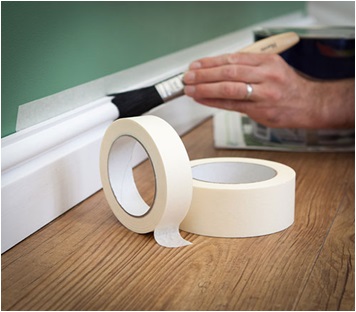
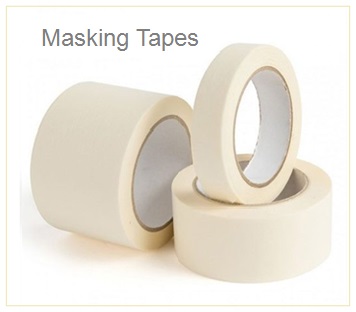
Important Tips
It is a very difficult and painful process to remove the paint stains if the masking is not done properly. The paint stains can also damage exterior furniture , landscape features, and outdoor flooring.
and therefore, all surfaces that need to be protected by masking with suitable masking material. The masking material is also readily available in any home improvement store.
You can use the masking paper tape to stick the masking paper on the wall surface. The masking tape does not peel off the paint when you unmask the objects after the painting job is completed.
Special attention needs to be given to protect the plants during the exterior paint work. The paint stains on the plants cannot be easily removed.
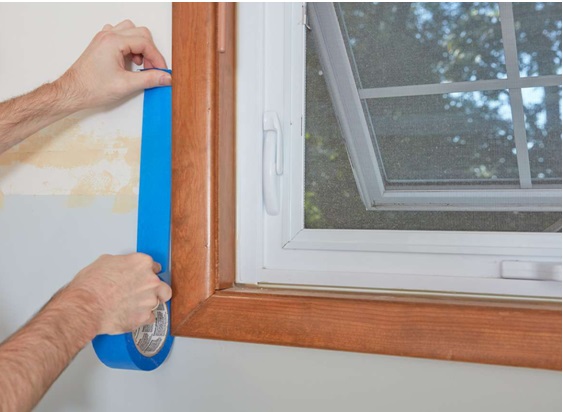
STEP - 4 , 5
Application Of The Primer Coat
How To Apply Primer Coat On Exterior Walls ?
Important Tips
The primer paint is first applied on the wall surface before the application of exterior wall paint. The primer coat is necessary to ensure a perfect bond between the paint and the wall surface.
The primer is a special type of paint that binds the paint layers to the wall surface. The cement primer is necessary to ensure a perfect bond between the wall surface and the layer of the putty used to make the wall surface smooth.
For self-priming ( two-in-one exterior paints), the primer coat is not required. In such cases , the paint can be directly applied to the wall surface.
The wall primer can be applied either by brush, by a roller brush, or by a spray gun. However, the application by spray gun will give a better result.
The primer coat should be allowed to become completely dry for a period of at least 6 to 8 hours after the application.
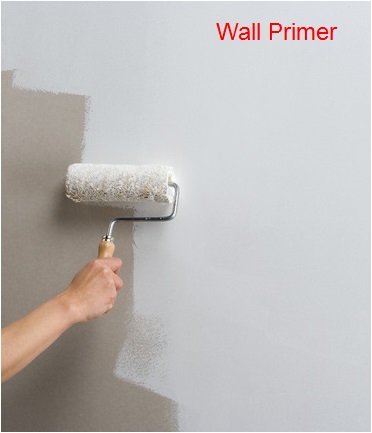
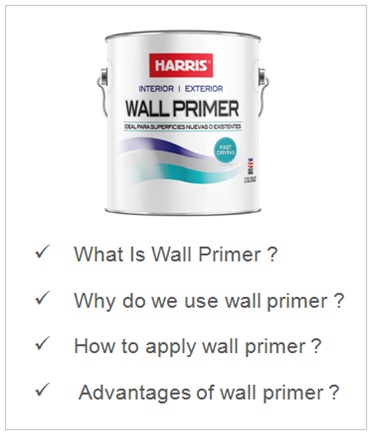
Important Tips
The primer coat can be applied either with a normal paint brush ( 4 inch), a paint spray gun, or a roller brush.
Two types of primer paint are available on the market. The first type is water soluble, and the second type is oil thinner ( any oil paint thinner ) soluble.
However, the oil-based thinner soluble primer is considered superior and gives the best results. The water-based primer also works absolutely fine.
STEP - 6
Apply The Two Coats Of Exterior Wall Paint
How To Apply Exterior Wall Paint ?
The selection of the exterior paint depends upon several factors. The exterior paint market is very competitive and you will find plenty of options with fancy features.
The user has to first decide the type of exterior paint to be used. Different types of exterior wall paint are available in the hardware store.
Furthermore, you also need to prepare the desired color shade of the wall paint. And finally, the method to be used to apply the wall paint.
Select The Type Of The Exterior Paint
At this stage, the wall surface preparation is complete and ready for the application of the exterior wall paint.
However, before the application of the wall paint, you need to first decide the type of paint you wish to select. Different types of exterior wall paints are available on the market with various features.
Further, you have the option of either using the readymade shade or preparing the desired color shade. And finally, you also need to decide the method to be used to apply the wall paint.
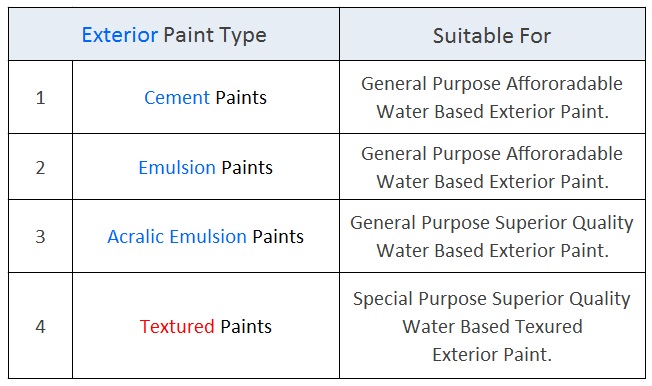
How To Select The Exterior Wall Paint ?
The selection of the type of exterior paint to be used mainly depends upon the budget and other factors. Different types of exterior paint are available on the market.
The paint type can be broadly grouped into two categories: The first type of interior is water soluble paint, and the second type is thinner soluble paint.
The water-based paints can be diluted by adding water to get the required consistency.
However, oil-based paints can be diluted by adding a specific oil paint thinner such as turpentine thinner. It is readily available in all home improvement stores.
Some of the most popular and commonly used exterior paint types include cement paints , emulsion paints , acrylic emulsion paints, and texture paints.
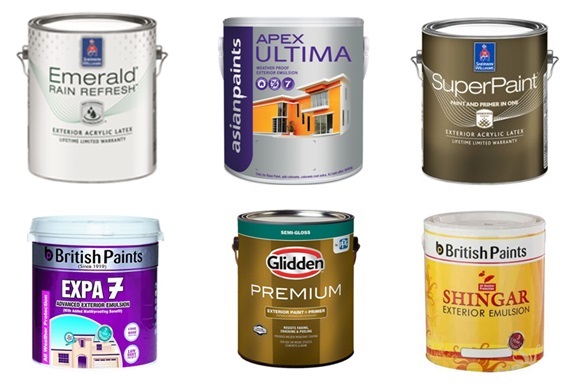
How To Select The Color Shade ?
How To Select Color Scheme For Exterior Walls ?
The exterior paints are available in a wide range of colors that depend upon the brand you select.
The user has the option of either a readymade shade or you can also create a color shade as per your choice. Depending upon the personal preferences and theme, the color scheme can be decided.
The easiest way to narrow down the color scheme options is by actual application of the paint in small swatches ( patches ). This gives a fairly good idea of the look of the paint.
For darker shades, the mass effect of the paint is completely different as compared to its limited use as a highlighter or on a smaller area.
The exterior color shade selection depends upon several factors. such as theme , building architecture style, natural light, mood , environmental conditions, and maintenance issues.
The selection of the exterior paint scheme is a matter of personal choice. However, there are some important factors that should be considered while selecting the correct color scheme for your house.
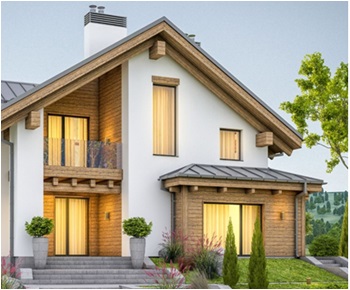

The exterior paints are available in a wide range of colors that depend upon the brand you select.
The user has the option of either a readymade shade or you can also create a color shade as per your choice. Depending upon the personal preferences and theme, the color scheme can be decided.
The easiest way to narrow down the color scheme options is by actual application of the paint in small swatches ( patches ). This gives a fairly good idea of the look of the paint.
For darker shades, the mass effect of the paint is completely different as compared to its limited use as a highlighter or on a smaller area.
The exterior color shade selection depends upon several factors. such as theme , building architecture style, natural light, mood , environmental conditions, and maintenance issues.
The selection of the exterior paint scheme is a matter of personal choice. However, there are some important factors that should be considered while selecting the correct color scheme for your house.
Exterior Paint Finishes
The paint finish and the paint texture are two different properties of the paint. The finish of the paint indicates the light reflection ability of the paint.
Different types of exterior paints are available on the market that can render different types of surface finishes. The exterior paint finish is an important feature of the paint that affects the visual effect.
The paint finish type is prominently mentioned in the paint product description. High-gloss finish, semi-gloss finish, satin finish, matte or flat finish, and eggshell finish are the most common exterior paint finishes.
The gloss and semi-gloss paints are relatively easier to maintain. The gloss finish paint is also considered to be more durable.
On the other hand , the matte finish paint creates a non-glossy effect on the wall surface. However , the matte finish paints relatively require more care and maintenance.
Exterior Paint Texture
The exterior paint texture is another important feature that should be considered at the time of selecting the exterior paint.
You can add texture to the painted surface by two methods.
Adding Texture With Roller Brushes
The first method used for adding the texture is by using different types of roller brushes.
The special texture roller brushes are readily available at any home improvement store. There are numerous roller brush options available.
Most exterior paint brands also offer a special category of exterior texture paints that create different types of textures on the wall surface.
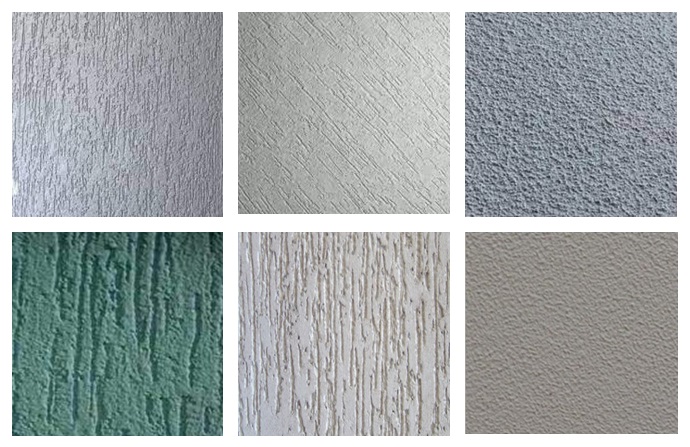
Adding Texture With Special Texture Paints
The second method used for adding the texture is by using special texture paints readily available on the market.
The special texture paints are available on the market. These texture paints are available in both powder and paste form, usually in a 25 kg or 30 kg bag.
The texture paints are water-based paints, and one to two liters of water can be added to the texture paint paste to get the required consistency.
This type of texture paint is applied on the exterior wall surface with a large-sized trowel. A single coat is sufficient to render a beautiful texture on the exterior wall surface.
The texture paint is the best solution for the exterior wall with multiple hairline cracks. The texture paint can effectively hide all types of plaster defects.
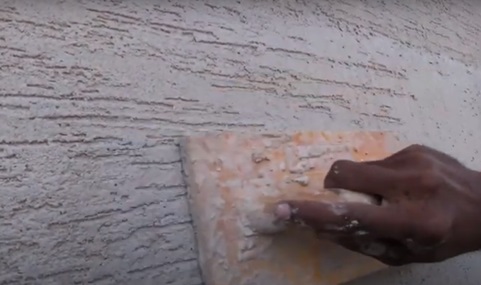
How To Apply Exterior Wall Paint ?
Exterior Wall Paint Application Techniques
Different techniques and methods are used to apply the exterior paint. The selection of the method depends upon the situation and area to be painted.
The exterior wall paint can be applied either by using a brush or by a roller brush. It can also be applied with a spray gun. Each method has its pros and cons.
However, the roller brush with a drip tray is the most common and preferred method for the application of exterior paint.
The spray gun option offers many advantages. It is also the preferred method due to its ease of use and speed. The spray can easily cover a large area with a uniform texture.
Wall Paint By Brush
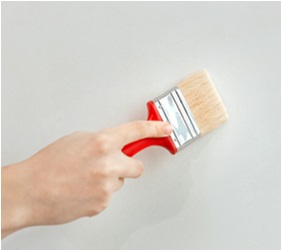
Wall Paint By Roller
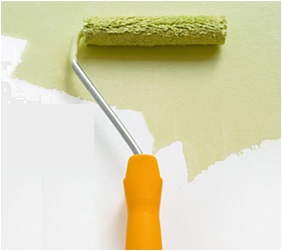
Wall Paint By Spray Gun
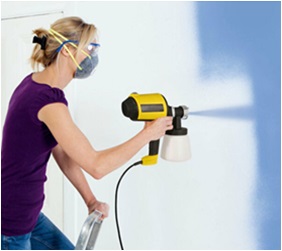
Important Tips
The use of a general paint brush for exterior wall paint application is the most common and preferred method. This method does not require any special skills.
The selection of the right wall paint brush can make a big difference in the outcome of your DIY project.
Different types of wall paint brushes are available on the market.
Read More
Exterior Wall Paint Process
How To Apply Two Coats Of Exterior Wall Paint ?
So far we have covered in detail how to paint the exterior walls till the surface preparation stage. We have also discussed various exterior wall paint finishes , textures, and the methods used to apply the paint on the exterior wall surface.
The exterior wall surface at this stage is considered ready for the application of two to three coats of exterior paint. The number of paint coats depends upon the type of paint, color shade, and the method used to apply the exterior paint.
The exterior paint coats can be applied either by using a 4 inch paint brush , or a roller brush, or by using a spray gun. Depending upon the skill of the painter , each of these methods can give a different texture to the exterior wall surface.
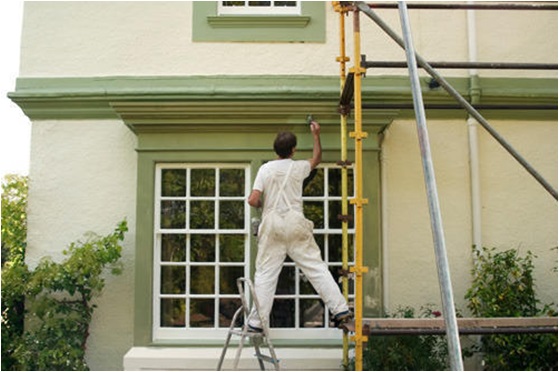
The exterior paint work is executed from top to bottom. The wall painting work can be started after the surface preparation work is completed.
The first coat of the exterior wall paint can be applied in either a horizontal or vertical direction. If the first coat on the exterior wall is applied horizontally, then the second coat should be applied in the vertical direction to get a uniform finish.
The second coat of exterior paint can be applied only after the first coat is completely dry. The second coat of the paint can be applied after a gap of at least eight hours in dry weather conditions.
Important Tips
If you are using a brush to paint the wall surface, then the roller can be applied to the wet paint surface to give different types of textures to the wall surface.
Different types of wall paint rollers and brushes are available on the market for imparting different textures to the wall surface.
The roller brush extension rods can be used to extend the reach of the roller brush. Similarly, special ladder attachments are available that hold the painting tools and the paint cans while using the ladder.
If the first coat is applied in the vertical direction, then the second coat should be applied in the horizontal direction to ensure a uniform finish of the painted wall surface.
STEP - 7
Deep Cleaning After The Wall Paint Work
Prevention is always better than a cure. The masking operation can substantially reduce your post-painting cleaning efforts required after the paint work is complete.
The last step after the painting work is the deep cleaning operation. This step involves unmasking all the objects and the removal of all the masking covers.
You can remove some minor paint stains left over with the help of either acetone, turpentine, or any mild thinner to remove the minor stains.
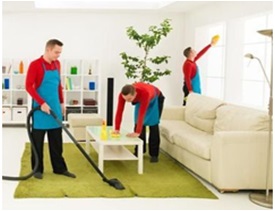
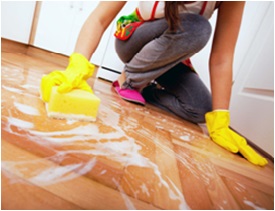
Important Tips
When cleaning, the use of harsh stains removers can cause permanent damage to your furniture, floors, and other surfaces.
The post-painting work cleaning operation done by the painting contractor should be closely supervised to avoid any damage.

